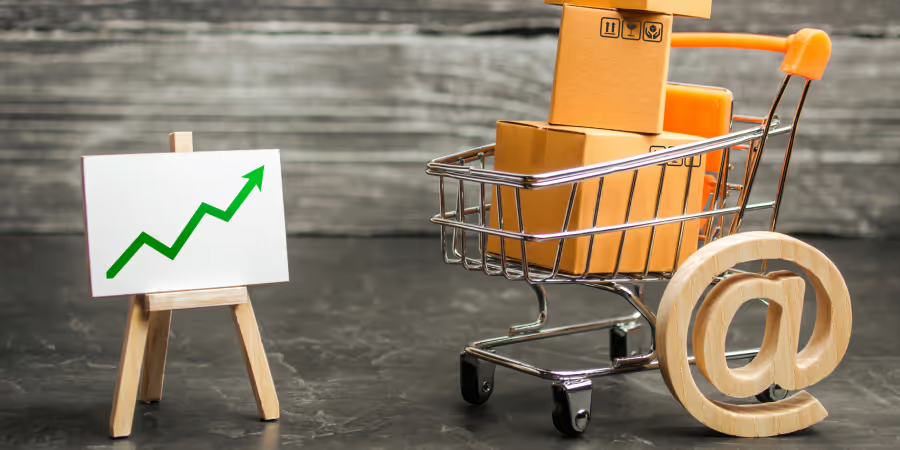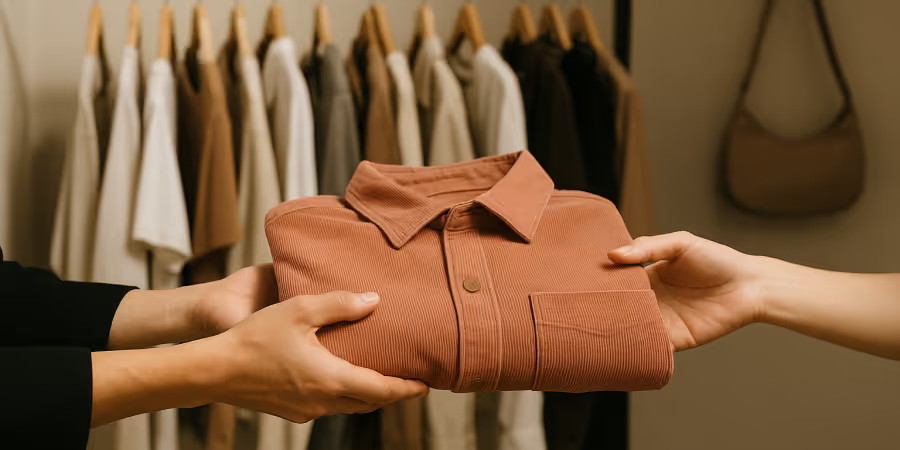Summary
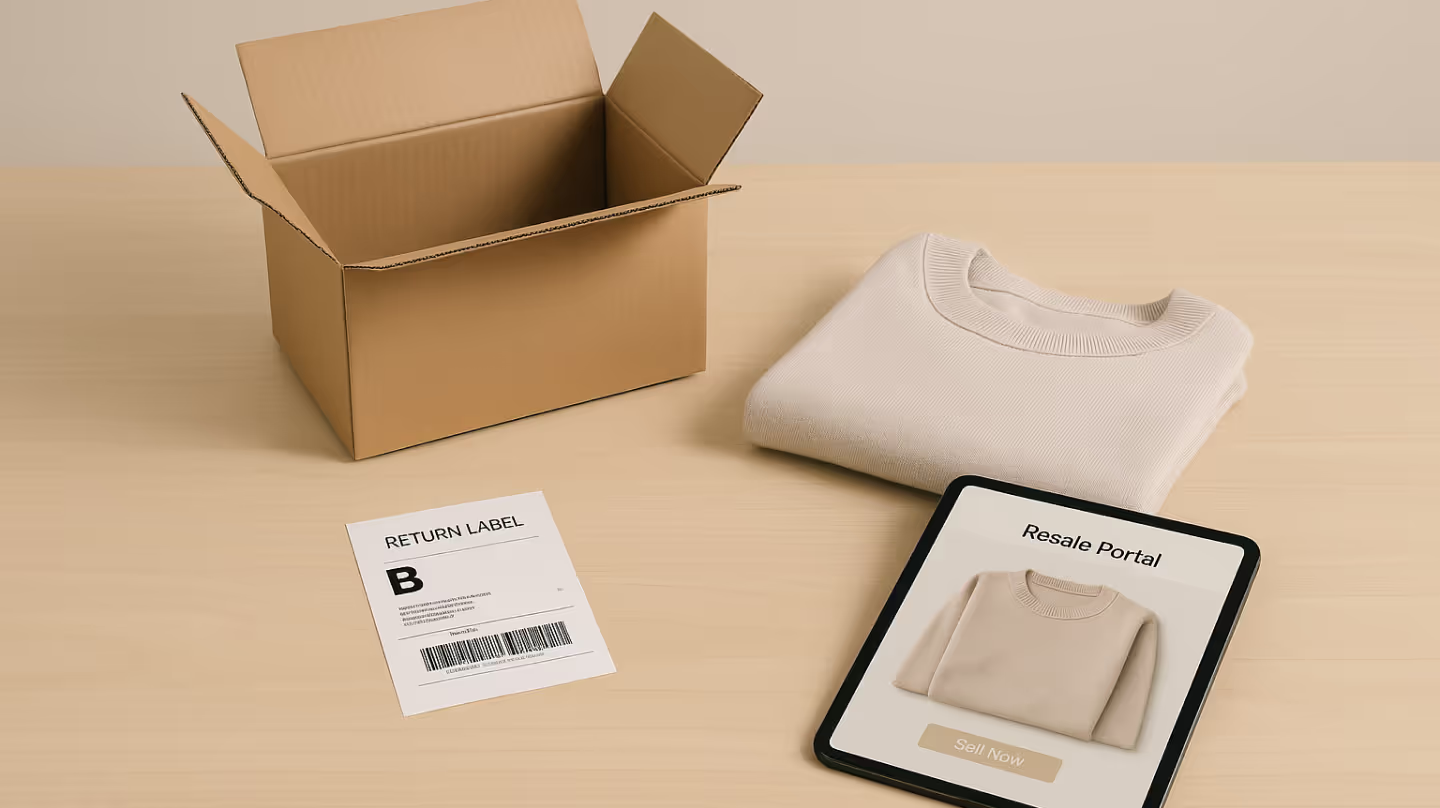
Resale-as-a-Service: The Untapped Value of Resale
Most companies leave value on the table after the first sale. Once a product leaves their hands, they lose visibility, control, and the chance to engage the customer again — while missing out on revenue opportunities from that product’s second life. Resale-as-a-Service (RaaS) helps brands reclaim this value by enabling them to take back, refurbish, and resell their products — without the operational complexity of building their own resale systems from scratch.
In an era where customers demand sustainability and regulators push for circular economy practices, RaaS provides an easy, profitable way for manufacturers and retailers to extend product lifecycles. Instead of watching third-party platforms capture the resale market, brands can now own the secondhand narrative, drive additional revenue, and strengthen customer loyalty — all while reducing environmental impact.
At its core, Resale-as-a-Service combines technology, logistics, and service expertise to help brands launch branded resale channels quickly and efficiently. For sectors like textiles, sports equipment, household appliances, furniture, children’s products, and industrial machinery, RaaS represents a powerful lever to turn circularity into profit.
What exactly is Resale-as-a-Service?
Resale-as-a-Service (RaaS) is a business model that enables brands to enter the resale market without having to build and manage the complex infrastructure themselves. Instead of setting up their own take-back systems, refurbishment processes, and resale platforms, companies partner with specialized providers who deliver everything as a service — from technology and logistics to customer service and analytics.
The key advantage: brands maintain full control over the customer experience, pricing, and brand narrative, while experts handle the operational complexity in the background. This means manufacturers and retailers can quickly launch resale channels that look and feel like their own — without tying up internal resources or investing heavily in new systems.
At koorvi, this is exactly what we make possible. We help companies in textiles, furniture, electronics, children’s products, and industrial machinery turn resale into a profitable, easy-to-manage part of their business model — so they can generate revenue, increase customer touchpoints, and meet their sustainability goals.
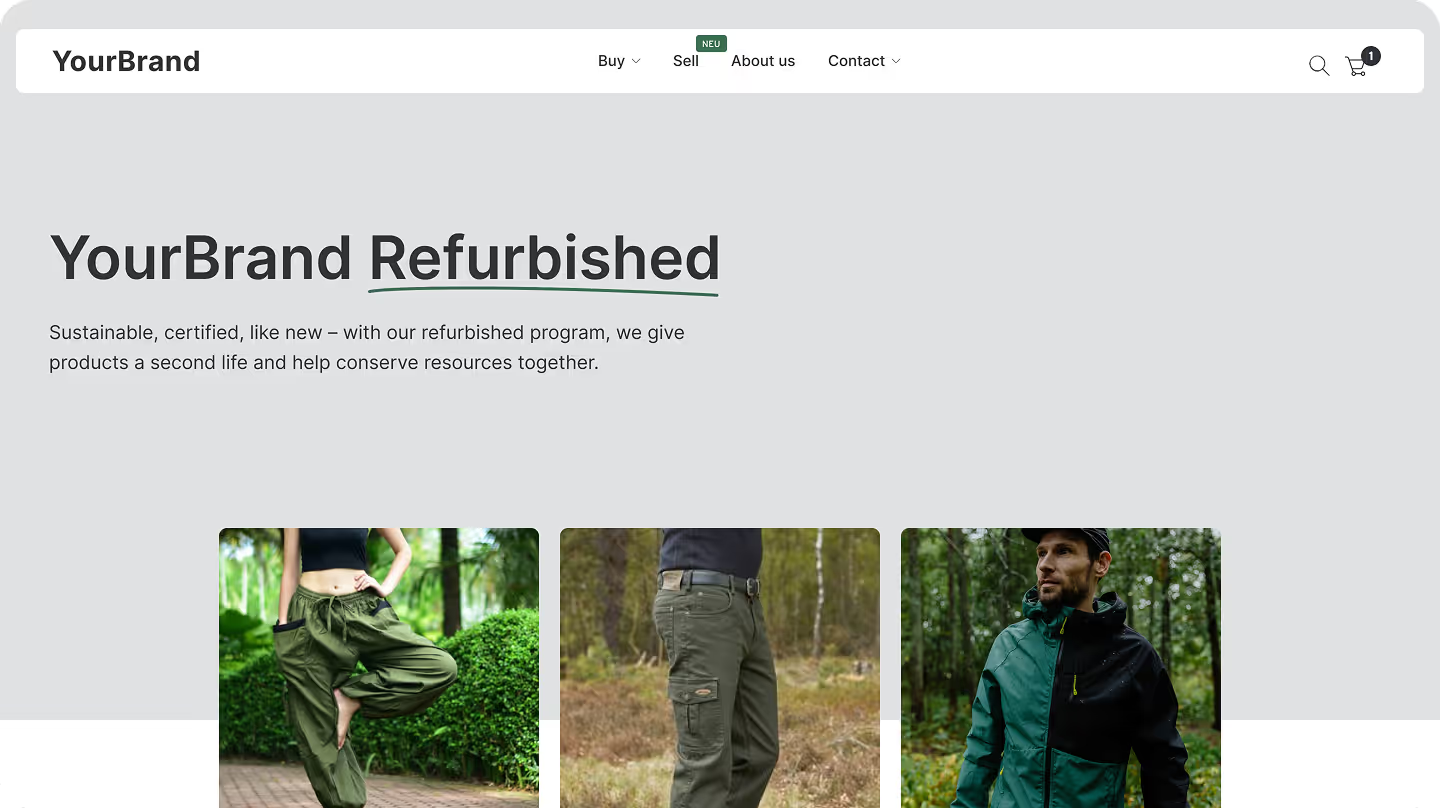
Resale-as-a-Service vs. Other Models: Why It’s Different
When stepping into the resale market, it’s important to understand how Resale-as-a-Service (RaaS) stands apart from other concepts that might sound similar — but deliver very different outcomes for your brand.
Unlike peer-to-peer resale platforms like eBay or Vinted, where customers sell directly to each other and the brand has no say in pricing, product presentation, or customer experience, RaaS keeps your brand in control. You decide how your products appear in the resale market and how customers interact with them.
RaaS also goes beyond traditional buyback or trade-in programs, where customers return used products in exchange for a discount on something new. While trade-in is a useful tool, it stops at the point of return. Resale-as-a-Service powers the entire cycle — from take-back to refurbishment, resale, and delivery — helping you generate revenue from the second life of your products.
It’s important not to confuse Resale-as-a-Service with Retail-as-a-Service, even though they share the same acronym. Retail-as-a-Service focuses on shared physical retail spaces where multiple brands showcase their products, while RaaS enables brands to create resale programs that support the circular economy.
Lastly, reverse logistics providers typically handle the flow of returned products, repairs, or recycling. But they don’t provide the customer-facing resale platform or the tools to manage pricing, marketing, and analytics. Resale-as-a-Service brings it all together — combining operational expertise with branded resale experiences that strengthen customer relationships and drive new revenue.
Business Models Behind RaaS
Resale-as-a-Service (RaaS) providers offer flexible business models that make it easy for brands to step into the resale market — without massive upfront investment. The most common models include:
- Commission-based models, where the provider takes a percentage of each resale transaction. This is a low-risk way for brands to enter the market, as costs are tied to actual sales performance. Commission rates typically depend on the level of service — from basic platform use to full-service resale management.
- Subscription or hybrid models, where brands pay a monthly fee for access to the resale platform and tools, often combined with lower commission rates per transaction. This approach suits companies aiming for higher volumes or more customization in their resale operations.
- Value-added services generate additional revenue for RaaS providers while creating real value for brands. These services can include:
- Authentication and quality control — ensuring only genuine, high-quality products reach resale customers.
- Logistics and fulfillment — managing storage, shipping, and returns for resale inventory.
- Marketing and promotion — driving traffic to resale channels through targeted campaigns.
- Analytics and reporting — giving brands insight into resale performance, customer behavior, and sustainability metrics.
For brands, the key to profitability lies in choosing the right mix of services that fit their product category, customer base, and business goals. Done right, RaaS turns resale into a revenue stream that not only pays for itself, but strengthens loyalty and captures the secondary market before competitors do.
The Technology Powering RaaS
Behind every successful Resale-as-a-Service (RaaS) offering is a powerful technology stack that makes circular models not just possible, but profitable.
One of the cornerstones is authentication technology. Leading RaaS platforms combine AI-driven tools, blockchain-based provenance tracking, and human expertise to ensure that only genuine, high-quality products are resold. This is especially critical for categories like fashion, electronics, and machinery, where trust and quality assurance are non-negotiable.
Inventory and pricing automation is another key enabler. Advanced systems help brands track every item from take-back to sale, assess condition, and set dynamic prices based on market data, demand, and product lifecycle stage. This automation reduces manual effort while maximizing resale value.
Integration is what turns resale into a seamless extension of your business. The best RaaS platforms connect easily with e-commerce systems, CRM tools, ERP software, and emerging solutions like Digital Product Passports (DPPs). This means brands can manage resale operations alongside their core business — with unified data, marketing, and customer engagement.
Looking ahead, technology will continue to transform resale. IoT sensors, AI-powered pricing algorithms, and advanced data analytics will allow brands to optimize resale strategies in real time — creating a smarter, more profitable secondary market that adapts to customer needs and market trends.
Why Brands Are Embracing Resale-as-a-Service
The resale market is no longer a niche — it’s becoming a core driver of growth. Global secondhand sales in fashion for example, are projected to exceed $350 billion by 2028, with resale growing 11 times faster than traditional retail. Online resale alone is expected to account for nearly half of all secondhand spending by 2025. For brands, this represents a massive untapped revenue stream.
But it’s not just about sales potential. Today’s customers expect more from the brands they buy. Consumers — especially younger generations — are actively seeking sustainable options, while governments across Europe and North America are introducing regulations like Extended Producer Responsibility (EPR) that push companies to take greater accountability for their products’ lifecycle. Resale-as-a-Service provides a practical, profitable way to meet these rising expectations.
Perhaps most importantly, RaaS enables brands to own their secondhand narrative. Instead of letting third-party marketplaces define how their products are resold, companies can deliver a resale experience that aligns with their values, quality standards, and customer promises — building loyalty and trust in the process.
Some of the companies already benefitting from it are Tchibo, The North Face and Ahrend.
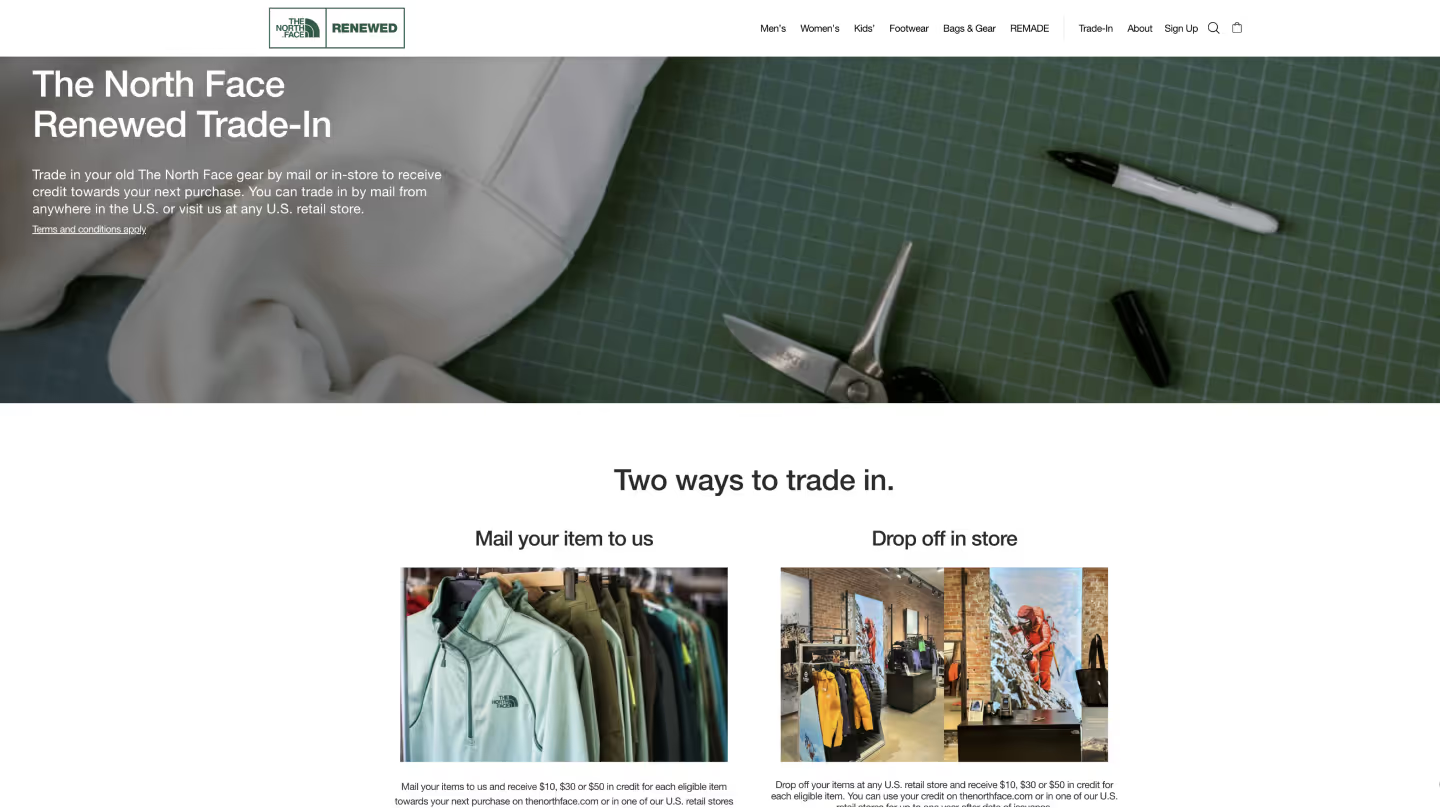
Challenges to Watch
While Resale-as-a-Service (RaaS) opens up exciting opportunities, it’s important for brands to be aware of the challenges that come with building a successful resale program.
First, there’s the operational complexity. Resale involves handling individual products, each with unique conditions. Grading, pricing, and managing logistics at scale require robust processes and reliable partners. Without the right systems in place, the cost and effort can quickly outweigh the benefits.
Then there’s the challenge of integration with legacy systems. Many brands have existing e-commerce, ERP, and CRM platforms that weren’t designed with circular business models in mind. Connecting these systems to a resale platform without disrupting core operations demands careful planning and the right technology.
Finally, brands must ensure their resale programs deliver genuine sustainability impact — not just marketing claims. Customers and regulators are increasingly skeptical of greenwashing. This means tracking and reporting meaningful metrics, such as CO2 savings, landfill diversion, and product lifespan extension, to prove that resale efforts make a real difference.
At koorvi, we believe these challenges are solvable — and that with the right strategy and tools, resale can become a powerful, profitable part of any business.
How to Choose the Right RaaS Approach
Choosing the right Resale-as-a-Service (RaaS) solution depends on your brand’s unique goals and resources. Factors to consider include:
- Brand positioning: Are you a premium brand needing tight control over customer experience, or a value-focused brand aiming for scale?
- Product type: High-value, durable goods (like furniture or appliances) may require more robust refurbishment and authentication processes than fast-moving consumer goods.
- Target customer: What resale experience will your customers expect — seamless integration into your existing shop, or a separate resale destination?
- Internal capacity: Do you have resources to manage parts of the process, or do you need a full-service partner?
Our recommendation: start small, learn fast, and scale smart. Launch a pilot program with a clear product focus. Test the customer response, refine your operations, and then expand to new categories and markets. At koorvi, we guide you through every step — from concept to profitable circular business model.
The Future of Resale-as-a-Service
Resale-as-a-Service is no longer a nice-to-have — it’s becoming a standard part of modern retail and manufacturing strategy. As resale continues to grow faster than traditional retail, and as sustainability expectations rise, brands that act now will gain a significant competitive edge.
Own your secondary market before someone else does. koorvi helps you make resale profitable, easy, and on-brand.
FAQs
What is Resale-as-a-Service in simple terms?
Resale-as-a-Service (RaaS) is a model where brands partner with expert providers to set up and run their own resale programs. The provider supplies the technology, logistics, and services needed, so the brand can focus on controlling the customer experience and building revenue from second-life products — without building the infrastructure themselves.
How does RaaS help brands increase revenue?
RaaS allows brands to capture value from products beyond the first sale. By taking back, refurbishing, and reselling goods, companies generate additional revenue streams, extend customer lifetime value, and open up new touchpoints for customer engagement. Instead of losing resale opportunities to third-party marketplaces, the brand owns the secondary market and its profits.
How do I know which RaaS model is right for my business?
It depends on your goals and resources. Key factors include your brand positioning (premium vs. value), product type (durable vs. fast-moving), customer expectations, and internal capacity. Some brands need full-service solutions, while others prefer flexible, tech-driven platforms that integrate with existing operations. A pilot program is often the best starting point.
Can Resale-as-a-Service integrate with our existing e-commerce and ERP systems?
Yes — leading RaaS providers offer platforms designed for seamless integration. They connect with your e-commerce, ERP, CRM, and marketing systems, so resale becomes part of your core operations rather than a disconnected side project. This also allows you to leverage customer data and inventory management across all channels.
What sustainability benefits can I expect from resale programs?
Resale programs extend product lifecycles, reduce waste, and lower the demand for raw materials. On average, resale items have up to 82% lower carbon footprint compared to new production. A well-designed RaaS program can help brands demonstrate measurable environmental impact, supporting both consumer expectations and regulatory compliance.
How does RaaS help protect and strengthen my brand image?
RaaS allows you to control how your products appear and are experienced in the secondhand market. Instead of leaving resale to uncontrolled third-party platforms, you create a branded resale experience that aligns with your quality standards, values, and customer promises — building trust and loyalty.
What are the setup costs for launching a RaaS program?
Setup costs vary depending on the provider and the scope of services. Many RaaS models operate on commission or subscription bases with minimal upfront investment. The key is that costs scale with performance — you pay more as you generate more resale revenue, making the model low-risk to start.
What should I look for in a Resale-as-a-Service partner?
Look for a partner who offers flexible technology, strong integration capabilities, proven operational expertise, and experience in your product category. Transparency on sustainability metrics, support for brand control, and the ability to scale with your ambitions are also critical factors for success.


